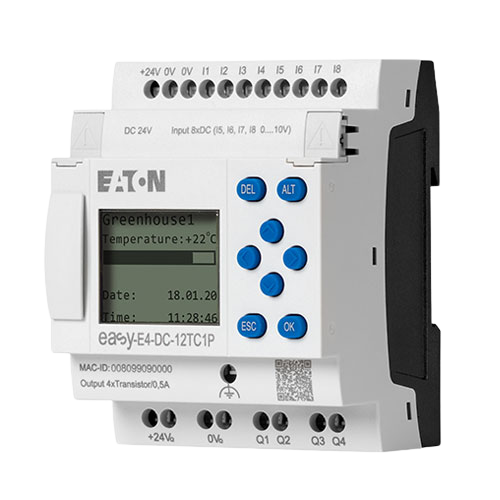Posted on 22nd Dec 2022

PLCs or the automation of mechanical and electrical systems are used in almost every structure and facility. In fact, PLCs are employed in a wide range of industries and have innumerable uses in labs, plants, and factories.
Their use will only grow when more intricate facilities are built and factory floors are expanded.
Given that PLCs have been in use for almost 50 years, you may assume that they are an outdated technology, yet advancements are imminent.
This article by CM Industry Supply Automation - Lenze VFD, KEB VFD, Servo Drive supplier and repair service provider will discuss the future of PLCs in industrial automation and advancements in the industry.
A new generation of PLCs
In all industries, processors, circuit boards, and other components are getting smaller. PLCs are starting to adopt this strategy.
Modern improvements include larger memory capacities, quicker CPUs with improved cycle times, and additional communication functions.
We may anticipate that as higher level PLCs get smaller and more compact, mini PLCs will evolve to include many of their functions.
The fact that solid state memory drives are getting smaller and cheaper is a tremendous benefit to PLCs.
This makes it possible to store data locally and enables the use of a PLC in numerous applications that previously required pricey data collecting devices.
Nonvolatile portable memory devices are another example of a characteristic from the consumer electronics industry that is becoming more widespread.
These provide the PLC customer with significant advantages by housing a sizable quantity of extra memory in a compact chip.
PLCs and PACs Merge
As automation experts pay more attention to the advancement of the performance and functionality of the machines rather than the terminology around these devices, PACs and PLCs will continue to converge over time.
Advanced capabilities like motion control, vision system integration, and simultaneous support for various communication protocols will become more widespread thanks to faster CPUs and greater memory.
However, the machines will continue to have the ease of use that makes the PLC so appealing to many users.
The increasing need for these systems has made it difficult for designers to create systems that are durable and able to survive an industrial setting.
Future problems could include maintaining a degree of quality while keeping costs down (connectivity, memory expansion, and processor power upgrades needed to run ever more complex applications).
As a result, PLC prices could rise in the future.
More communication
A high-end PLC currently has numerous communication ports to accommodate various protocols.
Future consumers' demands for more standardized solutions, maybe limited to Ethernet and wireless with industrial Bluetooth as a potential option, will cause a shift in this.
Before we see a significant convergence of commercial and industrial wireless communication protocols, the industry does need a more reliable wireless technology with increased range and the preservation of data integrity.
Wi-Fi, ZigBee, and the rise of Bluetooth have all contributed to advancements in this area, but none of them have provided a solution for applications on factory floors.
The use of wireless will become more widespread in the future because it is effective in many less important monitoring applications where real-time control is not necessary, such as remote terminal units (RTUs) where line-of-sight is accessible.
Significant Improvements
The integration of enterprise resource planning (ERP) and other higher level computing systems to the manufacturing floor will be the most daring shift in the future of the PLC.
Manufacturers of controllers must take into account the requirements of the user and offer a solution where the PLC not only manages the application but also offers the means to easily manipulate and present process data to the users who require it.
ERPs play a role in that.
PLCs are unable to turn data into reports, which has a negative impact on management's capacity for planning and decision-making.
A PLC, for instance, can determine when a piece of machinery or equipment needs to be repaired.
However, it doesn't keep vital data regarding particular pieces of equipment, which is required for workers to decide what to do next.
If an ERP is involved, staff will then have access to this data, enabling a more effective reaction.
Employees are able to make more informed and effective decisions on the factor floor thanks to the mix of historical data and real-time data.
Additionally, this entails a decrease in operational expenses and an overall improvement in performance.
PLCs' Future Is Promising
PLCs will continue to advance, making newer models of these controllers worthwhile to consider as the technology gets more streamlined and efficient and continues to be the ideal choice for a range of industrial automation applications. Its longevity will be determined by evolving characteristics including wireless capability, smaller sizes, and flexibility.
The technical expertise and understanding required to work with programmable logic control systems are provided through our Programmable Logic Controller Technician Program.
Get more information from CM Industry Supply Automation via call at India: +91 8956113099, Australia: +61 3 9013 5882 or email at sales@cmindustrysupply.com .